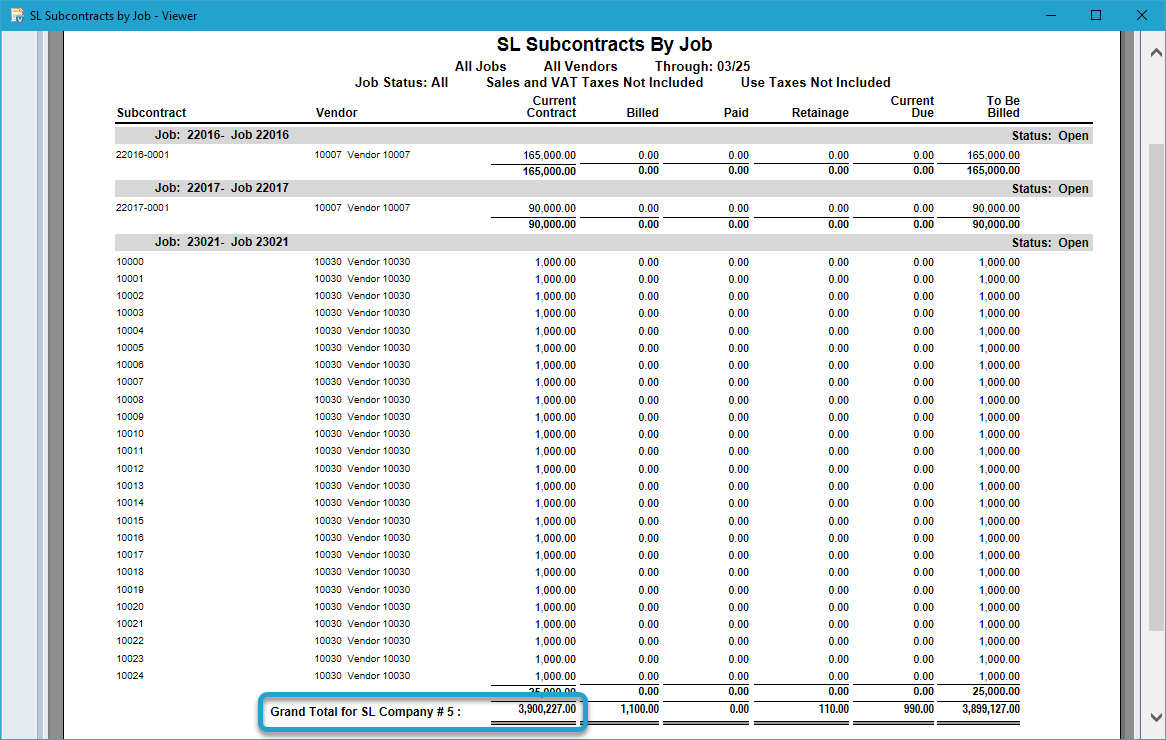Getting Started #
If you have open subcontracts at the time of conversion, be sure to import these records to reflect accurate committed costs and ensure that future subcontract invoices are applied correctly against those commitments.
Template Info #
- Required Source Data
- Header Table
- Vendor #
- Subcontract #
- Job #
- Description
- Contract Date
- Line Table
- Subcontract #
- SL Item #
- Job #
- Phase #
- Cost Type #
- Description
- Unit of Measure
- Original Units
- Original Unit Cost
- Original Cost
- Retainage %
- Header Table
- Optional Source Data
- N/A
- Additional Tips
- The Subcontract column is used to link the Header and Line records together for each invoice, so make sure the numbers are unique and assigned appropriately.
- Make sure to include all Subcontract Items in this import—even those created from subcontract change orders with $0 original amounts. These SL Items are required for the subcontract change order import.
- Basic Steps
- Download TAD Template
- Copy the Source Data
- Import the Records
- Post Open Batch
- Validate Imported Data
Download TAD Template #
Open your source data file in Excel.

Click the Templates button on the left side of the ribbon.

If you’ve signed into TAD before, then you should receive the message below. Click Yes.
If you have not signed into TAD before, follow the Get Connected instructions.
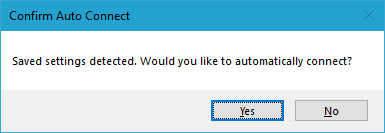
Select the Implementation Balance – SL Subcontracts template.
Click the Download Selected button.
This template includes multiple tables, so make sure to check the Skip Remaining Parameter Entry box and click the Download button to download them all at once.
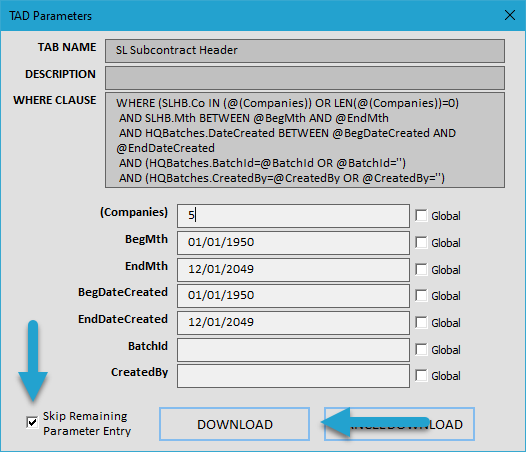
You’ll see multiple worksheets, as shown below.
The SL Subcontract Header and SL Subcontract Items sheets are used to import the subcontracts.
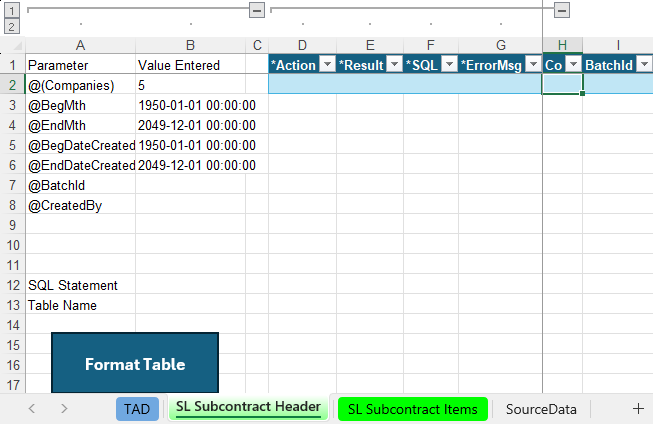
Copy the Source Data #
Copy and paste the header source data into the SL Subcontract Header sheet. If your source data layout matches the example above, this will be a single copy and paste since the SL Subcontract Header columns are already in the same order.
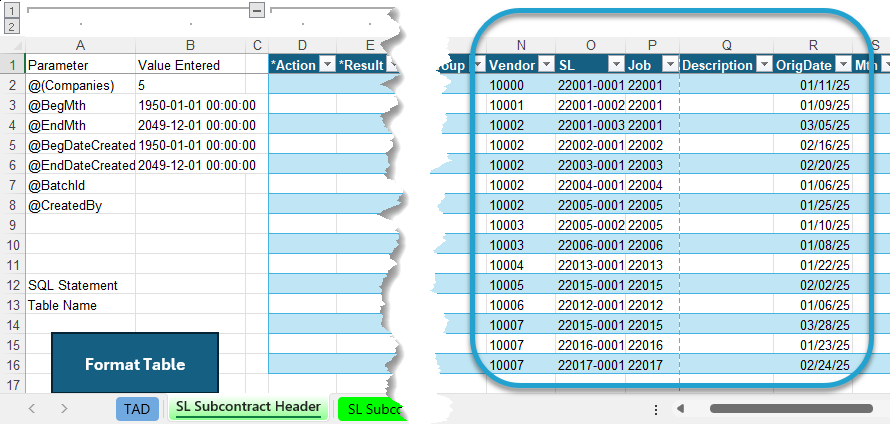
Copy and paste the line source data into the SL Subcontract Items sheet. If your source data layout matches the example above, this will be a single copy and paste since the SL Subcontract Items columns are already in the same order.
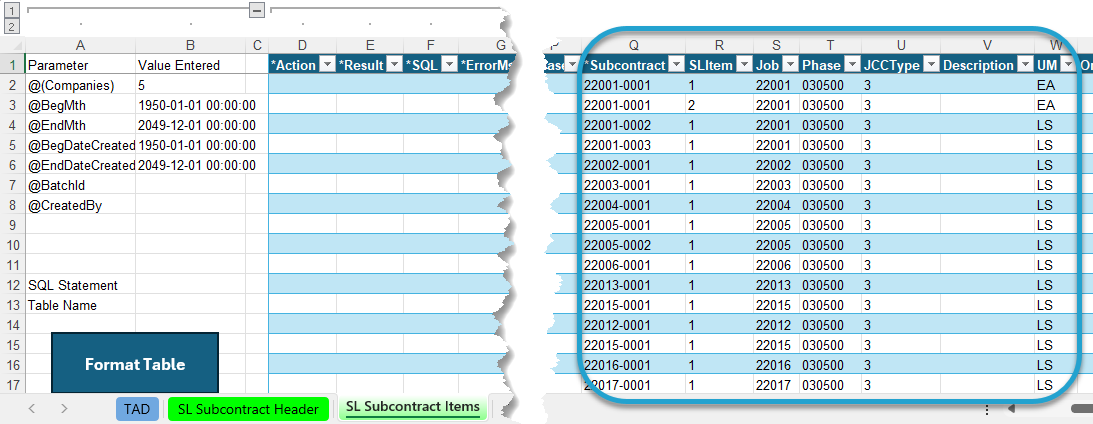
Import the Records #
Go to the SL Subcontract Header worksheet.
Click the submenu of the Format Table button on the ribbon and choose the Regenerate Excel Formulas button. This will apply formulas to multiple columns.

The Mth column defaults to the current month. Update this value if you’re loading balances as of the prior month.
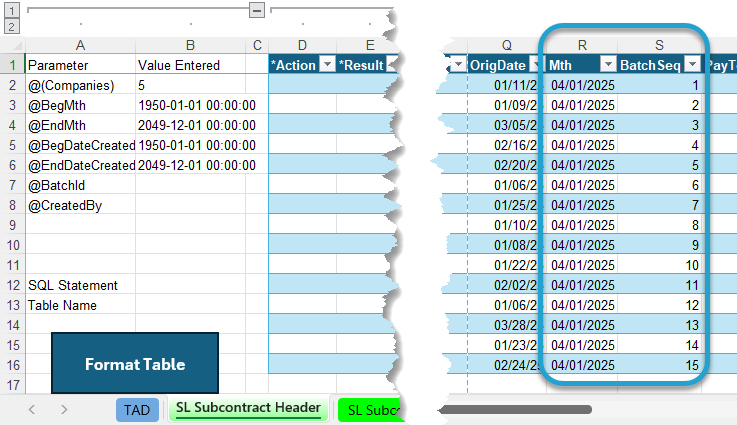
Click the Format Table button to format the data you copied and to apply missing default values.
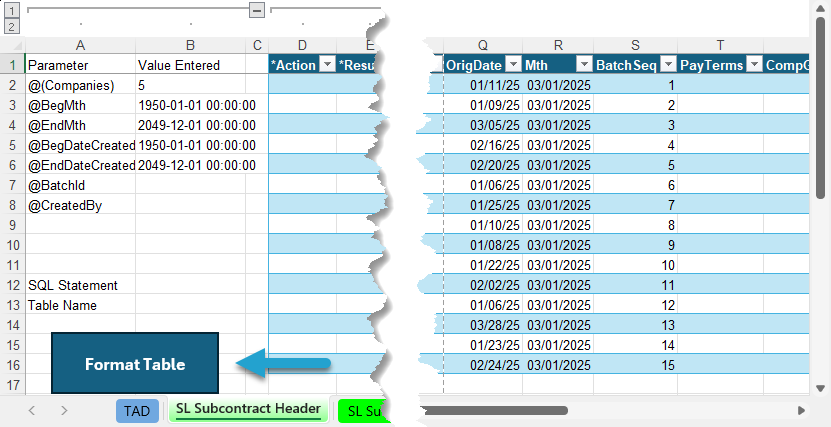
The *Result column will show Formatted for every record. You will see the default Company number applied.

Go to the SL Subcontract Items worksheet.
Click the submenu of the Format Table button on the ribbon and choose the Regenerate Excel Formulas button. This will apply formulas to multiple columns.

The Mth column defaults to the current month. Update this value if you’re loading balances as of the prior month.
The Mth value should match the Mth value on the SL Subcontract Header worksheet.

Click the Format Table button to format the data you copied and to apply missing default values.

The *Result column will show Formatted for every record. You will see the default Company number applied.
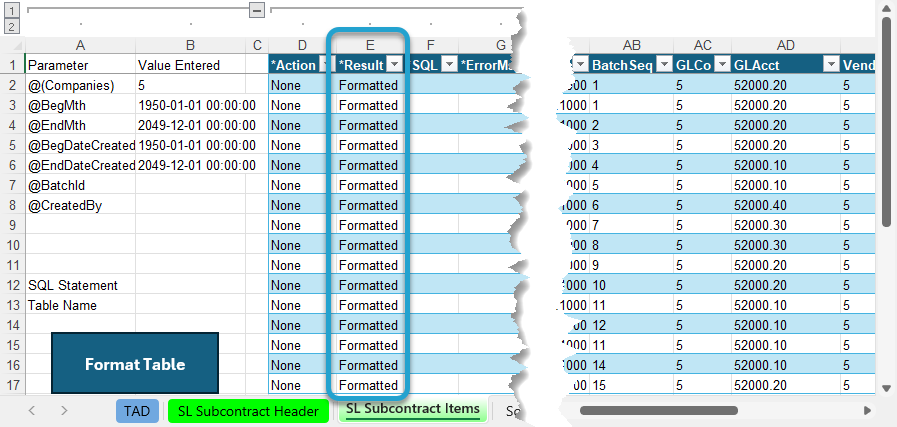
Go to the SL Subcontract Header worksheet.
Click the Get Batch # button to assign the next batch number to both the Header and Lines worksheets.
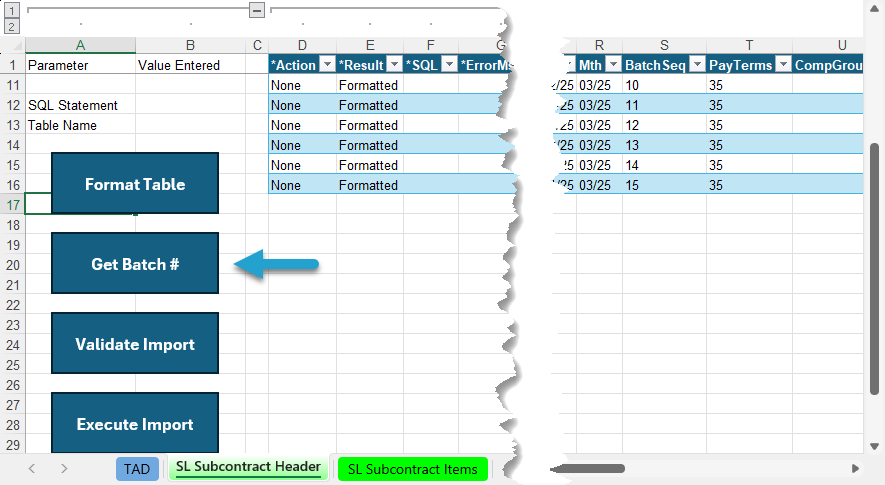
The *Result column will show Batch #XX Assigned for every record.
Click the Validate Import button.
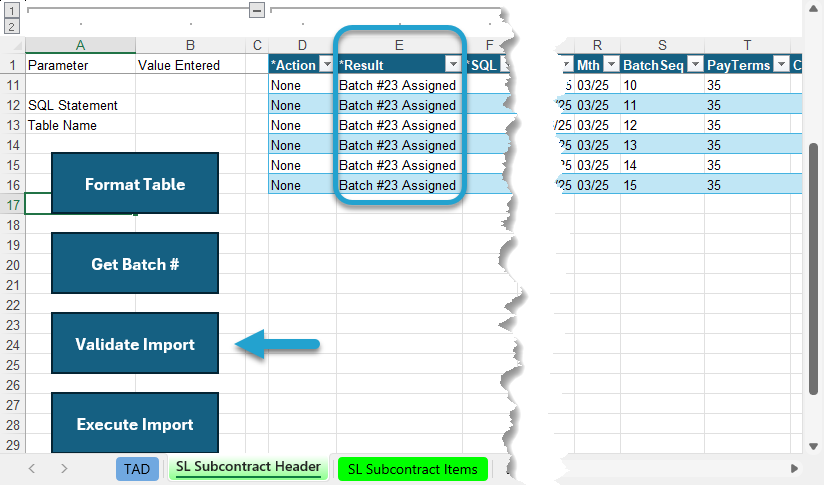
The *Result column will show Validated for every record. If this says Failure, then the *ErrorMsg column will provide the error.
Click the Execute Import button.
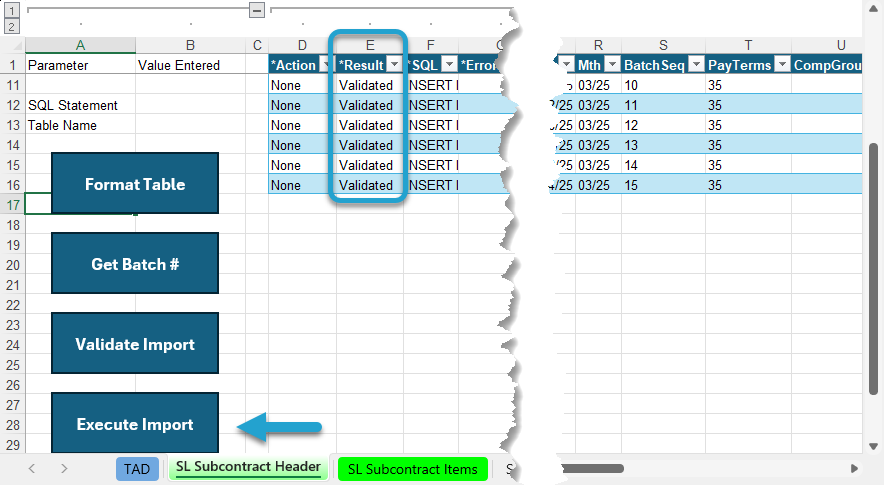
The *Result column will show Imported for every record.
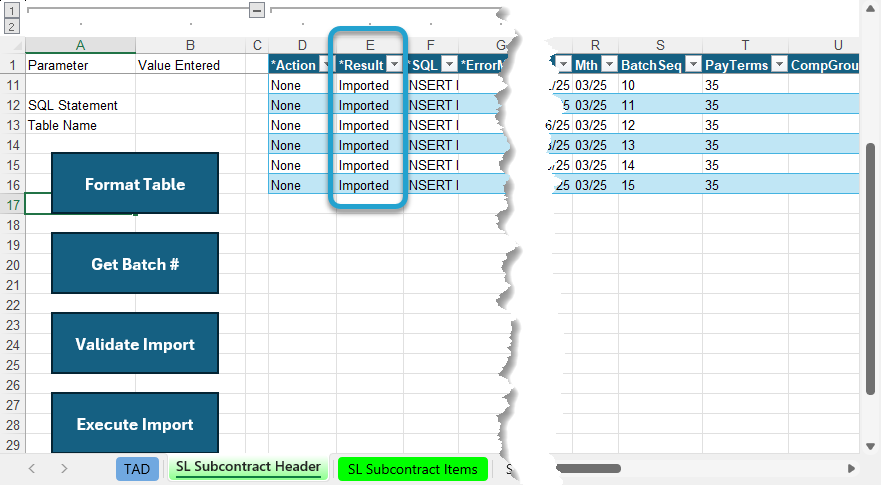
Go to the SL Subcontract Items worksheet.
The *Result column will show Batch #XX Assigned for every record since that was the last action on the worksheet.
Click the Validate Import button.
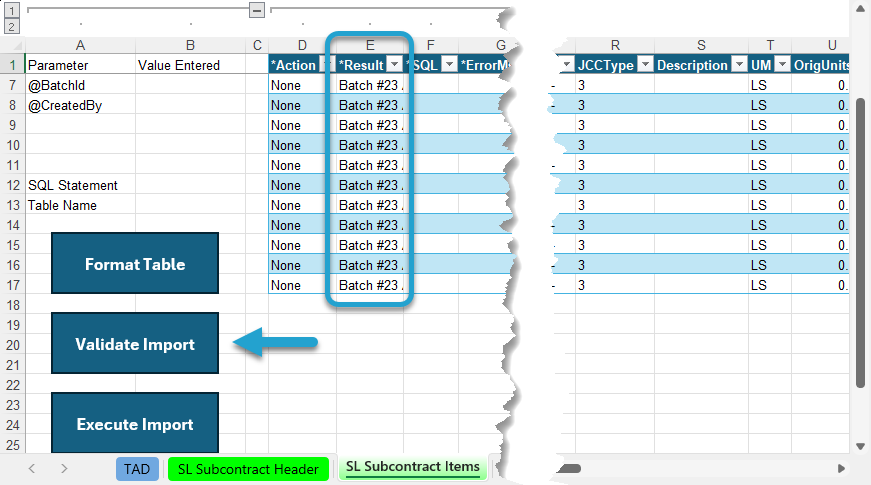
The *Result column will show Validated for every record. If this says Failure, then the *ErrorMsg column will provide the error.
Click the Execute Import button.
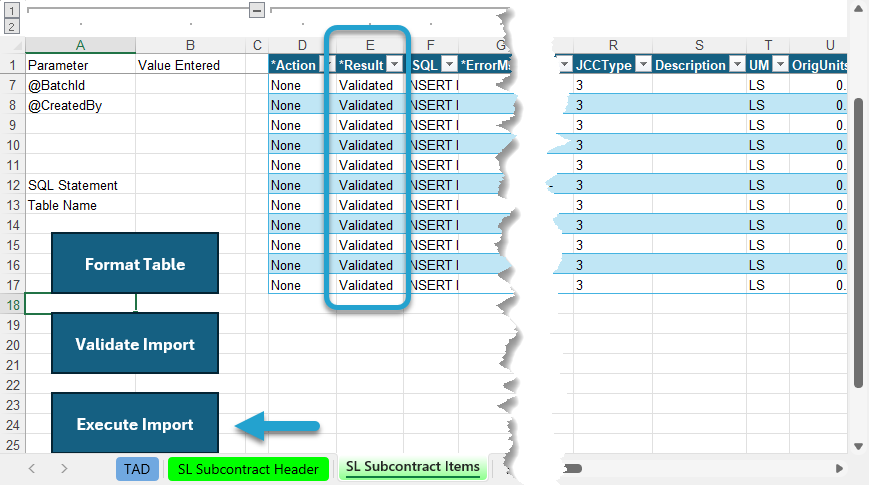
The *Result column will show Imported for every record.
That completes all steps needed in TAD. You can now open the SL Subcontract Entry batch in Vista to validate and post.
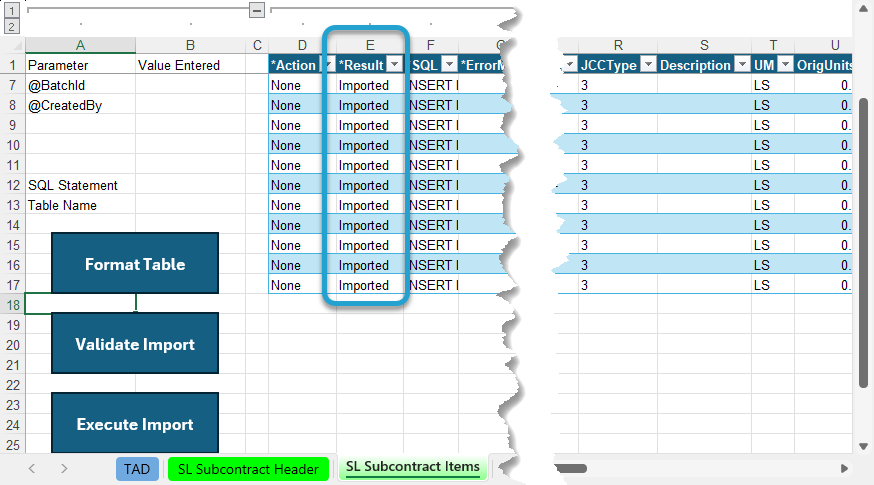
Post Open Batch #
There’s no interfacing that needs to be turned off for subcontracts.
Open the batch in SL Subcontract Entry.
With the batch open, go to File → Process Batch, then click the Validate button followed by the Post button.
Validate Imported Data #
You can validate the Subcontract Amounts by running the SL Subcontracts by Job report in Vista.
Enter your Company and the Through Month for the month that you just imported.
Make all other parameters look like the image below.
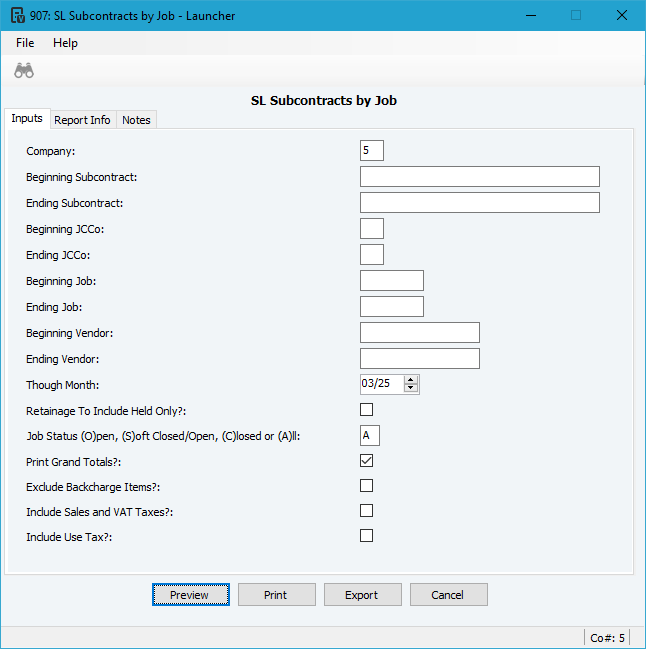
Verify the Grant Total for the Current Contract total at the end of the report matches the transactions that you imported.
